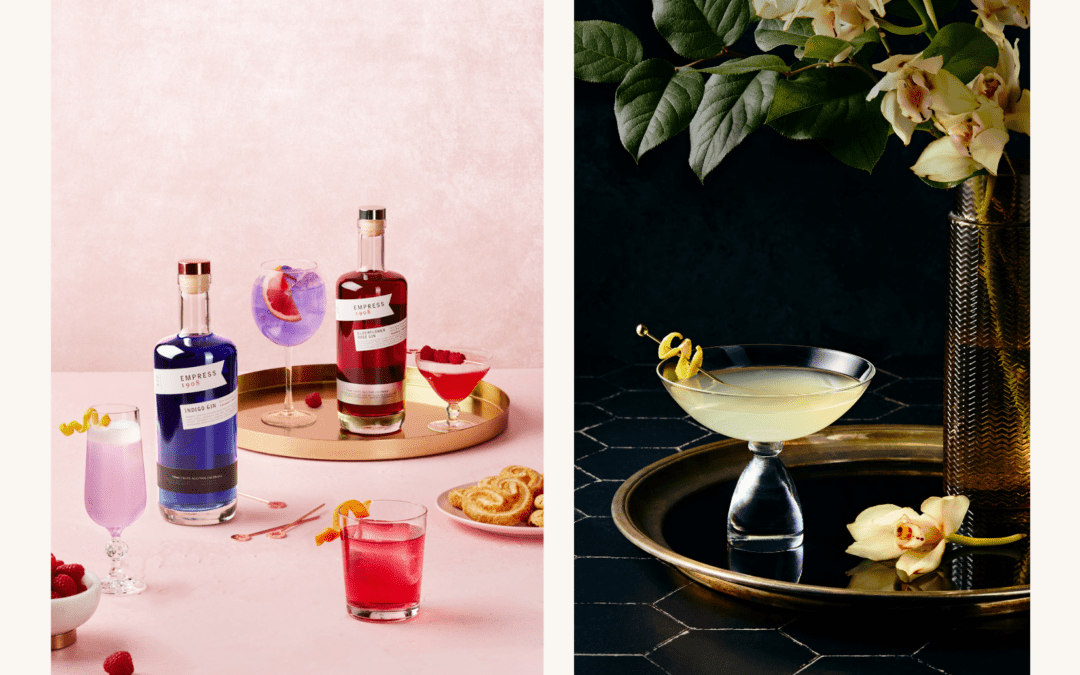When it comes to food photography, lighting setups are everything. They can make or break a shot, setting the mood and influencing how your audience perceives the dish.
From bright and airy to dark and moody, the right lighting setup can completely transform the feel of your food photos. In this blog post, we’ll explore how different lighting setups can influence the mood of your images and provide tips for achieving the perfect look.

Bright and Airy
Let’s start with bright and airy lighting setups. These are characterized by soft, diffused light that creates a sense of freshness and vitality in your photos. Bright and airy setups are perfect for showcasing light and delicate dishes like salads, pastries, and fresh fruits.
To achieve this look, you’ll want to use a large softbox or diffuser to create soft, even lighting that gently illuminates your subject from all angles. Position your light source slightly above and to the side of your subject to create soft shadows that add depth and dimension to the image. Keep the backdrop light and neutral to enhance the sense of freshness and openness in the photo.

Dark and Moody
On the opposite end of the spectrum, we have dark and moody lighting setups. These are characterized by deep shadows, rich colors, and dramatic contrasts that evoke a sense of mystery and sophistication.
Dark and moody setups are perfect for creating an intimate and atmospheric mood in your photos, making them ideal for hearty and rustic dishes like stews, roasts, and dark chocolate desserts.
To achieve this look, use a single directional light source such to create strong, dramatic shadows. Position the light source to one side of your subject to create deep shadows and bold contrasts that draw the viewer’s eye to the focal point of the image. Experiment with different props and backgrounds to enhance the mood and tell a story with your photo but make sure they are dark in color so they won’t pull attention away from the food subject.

Soft and Romantic
Soft and romantic lighting setups are characterized by warm, gentle light that creates a sense of intimacy and warmth in your photos. These setups are perfect for capturing the cozy and inviting atmosphere of a romantic dinner or special occasion.

To achieve this look, use a combination of soft, diffused light and warm toned props and backgrounds to create a soft and inviting atmosphere. Position your light source slightly above and behind your subject to create a soft, flattering glow that highlights the textures and colors of the food. Experiment with different angles and compositions to find the perfect balance of light and shadow that evokes the desired mood.

Crisp and Clean
Crisp and clean lighting setups are characterized by bright, even light that creates a sense of clarity and freshness in your photos. These setups are perfect for showcasing the vibrant colors and textures of fresh ingredients and simple dishes.
To achieve this look, use a combination of lightly diffused light with a generous amount of fill to brighten up the shadows. A large softbox with a a large piece of white foam core to bounce light back into the scene or a secondary light if using strobe will do the trick. If you’re using a second light, try a stripbox and make sure that the power is at about a 1/4 of your key light.
Keep the background simple and uncluttered to enhance the sense of cleanliness and simplicity in the photo.

Direct Sunlight
Direct sunlight is characterized by sharp shadows and creates bold contrasts in your photos. This type of light is often associated with midday sun when the sun is high in the sky and there are minimal clouds to diffuse the light. While hard light can be challenging to work with, it can also create dynamic and impactful images with vibrant colors and intense highlights.
When photographing food in direct sunlight or mimicking it with artificial light, it’s important to pay attention to the direction and angle of the light to minimize harsh shadows and prevent overexposure. Additionally, using scrims and diffusers can help soften the light and create more flattering illumination on your subject.
When working with hard light, managing the position of your light source is crucial to achieving the desired effect. Since hard light creates strong, defined shadows, controlling the direction and angle of the light can help minimize harsh shadows and create more pleasing results.
Positioning a bare bulb or reflector lamp at a slight angle to the side or slightly behind your subject can create interesting shadows and highlights that add depth and dimension to your photo. Utilizing smaller light sources like these are ideal for creating create harder shadows, enhancing texture and drama. By carefully positioning your light source and controlling light spill with modifiers like barn doors or flags, you can effectively manage hard light and create visually compelling food photographs.
Overall, while direct sunlight can present its challenges, it can also result in striking and visually compelling photographs when used effectively.

To sum up, the mood of your food photos is heavily influenced by the lighting setup you choose. Whatever the aesthetic that you’re looking to achieve, the right lighting can completely transform the feel of your images and evoke different emotions in your audience.
Experiment with different lighting setups to find the perfect mood for your next food photography project and watch as your photos come to life with emotion and atmosphere.

0




